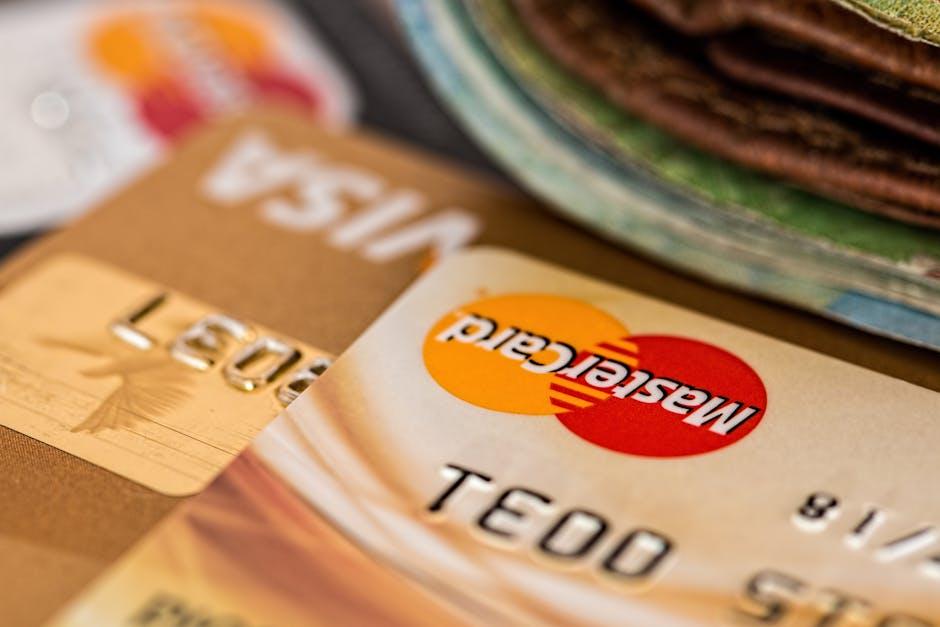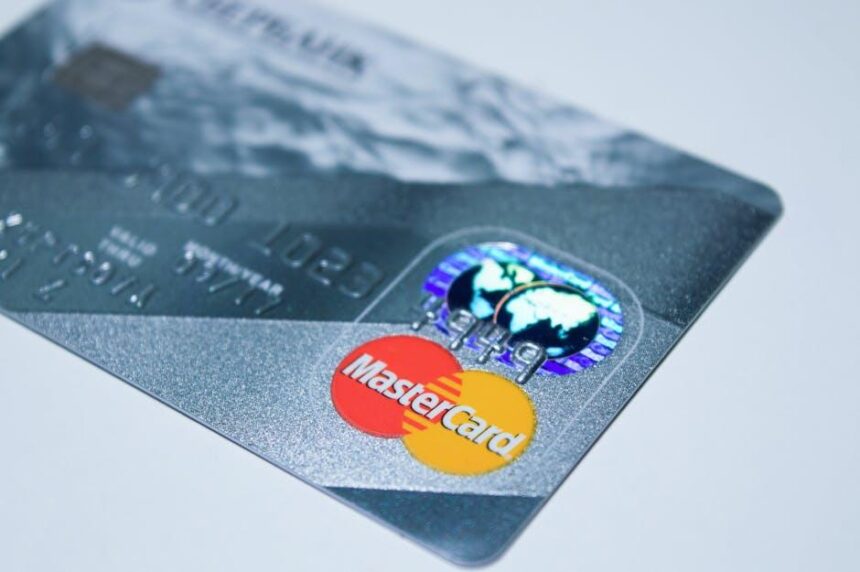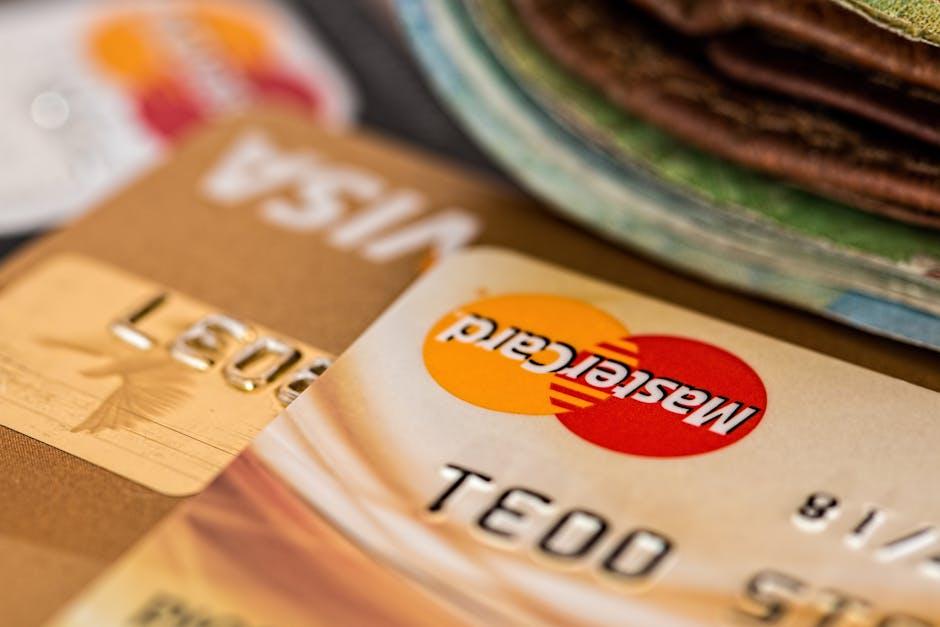In today’s fast-paced financial landscape, juggling multiple credit cards can feel akin to walking a tightrope. While credit cards can offer convenience and rewards, they also come with the potential for debt and stress if not managed wisely. Mastering the art of managing several accounts not only safeguards your credit score but can also be a powerful tool for financial growth. Amid a tangle of payment deadlines, interest rates, and varying benefits, finding balance is crucial. This article will explore actionable strategies, backed by expert insights, to help you navigate the complexities of credit card management with confidence and ease, ensuring a financial future that is both stable and prosperous.
Understanding the Benefits and Risks of Multiple Credit Cards
Managing multiple credit cards can be both advantageous and challenging. Understanding the benefits and risks associated with this practice will help you make informed financial decisions and maximize your credit potential.
Benefits of Having Multiple Credit Cards:
- Increased Credit Availability: More cards generally mean a higher overall credit limit, which can positively impact your credit utilization ratio. This ratio is a critical factor in calculating your credit score, as it reflects the amount of credit you’re using compared to your available credit.
- Diversified Rewards Programs: Different credit cards often come with unique rewards structures. By strategically using multiple cards, you can earn points, cash back, or travel rewards tailored to your spending habits. For example, using a card that offers 3% cash back on groceries while using another that provides 2% on gas can maximize your rewards.
- Enhanced Fraud Protection: Many credit cards offer superior fraud protection compared to debit cards. If your card is lost or stolen, your liability for unauthorized purchases is often limited, offering peace of mind when traveling or shopping online.
- Building Credit History: Maintaining multiple credit accounts can help bolster your credit history, showcasing your credit management skills to lenders. Responsible use of various accounts can enhance your credit score over time.
| Credit Card Type | Key Benefits |
|---|---|
| Rewards Credit Card | Earn points or cash back on purchases |
| Travel Credit Card | Earn miles and travel benefits |
| Balance Transfer Credit Card | Low or zero interest on transferred balances |
Risks of Having Multiple Credit Cards:
- Increased Debt Risk: With more available credit comes a higher temptation to overspend. Without careful budgeting and discipline, you could find yourself accumulating debt that becomes difficult to manage.
- Neglecting Payments: Juggling several due dates can lead to missed payments, which can negatively impact your credit score and result in late fees. Setting up reminders or automatic payments can help mitigate this risk.
- Complexity in Management: Keeping track of various accounts, payment schedules, rewards programs, and annual fees may become overwhelming. It’s essential to have a solid organizational system in place to avoid confusion.
- Impact on Credit Score: Opening multiple accounts in a short period may trigger hard inquiries on your credit report, which can temporarily lower your score. Additionally, if your credit utilization ratio spikes, this can also have negative implications.
Balancing these benefits and risks is key to successfully managing multiple credit cards. By leveraging the advantages while staying mindful of the potential pitfalls, you can navigate the world of credit cards confidently.

Creating a Strategic Payment Plan to Maximize Rewards
When it comes to maximizing your credit card rewards, a well-thought-out payment plan is crucial. Here’s how to create a strategic approach that ensures you’re getting the most out of your multiple credit cards.
- Understand Your Rewards Structure: Each card has different reward categories, such as travel, groceries, or gas. Identify which cards offer higher points for the categories you spend the most in.
- Schedule Payments Wisely: Make sure to pay your balances by their due dates to avoid interest charges that can negate your rewards. Setting calendar reminders can help manage this.
- Use Alerts: Many banks provide options to set up alerts for due dates and spending limits. These can help you stay on top of your payments and avoid overspending.
- Monitor Spending: Regularly check your statements to ensure you’re staying within your budget. This can also help identify any spending patterns that could be optimized.
- Leverage Sign-Up Bonuses: Many cards offer significant sign-up bonuses if you meet a minimum spending threshold in the first few months. Plan larger purchases around these periods to make the most of these offers.
- Pay Off Balances Strategically: If you have multiple cards, prioritize paying off high-interest balances first while making minimum payments on others. This can improve your credit score and save you money long-term.
Here’s a simple payment strategy table to help streamline your efforts:
| Card Name | Rewards Rate | Payment Due Date | Sign-Up Bonus |
|---|---|---|---|
| Card A | 3% on Travel | 1st of the Month | 50,000 Points |
| Card B | 2% on Groceries | 15th of the Month | $150 Cashback |
| Card C | 1.5% on All Purchases | 20th of the Month | 25,000 Points |
Consider Annual Fees: Factor in any annual fees when evaluating the benefits of a card. Sometimes, higher rewards can outweigh these fees, especially if they align with your spending habits.
Being proactive and organized with your credit card payments not only boosts your rewards but also supports a healthier credit score. Implementing these strategies can enhance your financial health while making the most of your credit card offerings.

Tracking Expenses Effectively to Avoid Overwhelm
Managing multiple credit cards can feel daunting, but tracking your expenses doesn’t have to be overwhelming. Implementing a structured approach will not only help you stay organized, but it will also ensure you maintain financial health. Here are some effective strategies:
- Utilize Expense Tracking Apps: Consider using apps like Mint, YNAB (You Need a Budget), or Personal Capital. These tools sync with your bank accounts and credit cards, allowing you to see your spending in real time and categorize transactions effortlessly.
- Set Up Alerts: Most American credit card issuers, such as Chase, Discover, and Capital One, offer customizable alerts. Set notifications for due dates, spending limits, or unusual transactions to stay informed and avoid surprises.
- Create a Budget: Draft a monthly budget that includes fixed expenses (like rent or mortgage) and variable expenses (like groceries and entertainment). Allocate a specific amount for credit card payments to encourage responsible spending.
- Monthly Reviews: Dedicate time each month to review your statements and spending trends. Understanding where your money goes will empower you to make adjustments in future spending and enhance your budgeting accuracy.
- Use Simple Spreadsheets: If you prefer a hands-on approach, create a spreadsheet using Google Sheets or Excel. Track each card’s balance, payment due dates, and total spending per category. Simple tables can provide clear visibility of your financial situation.
| Card Issuer | App for Tracking | Alerts Available |
|---|---|---|
| Chase | Mint | Yes |
| Discover | Personal Capital | Yes |
| Capital One | YNAB | Yes |
Adopting these practices can transform the way you manage your expenses, reducing stress and leading to better financial decisions. Remember, the key to effective expense tracking lies in consistency and being proactive about your financial habits.

Best Practices for Maintaining a Healthy Credit Score
Maintaining a healthy credit score is essential for getting the best rates on loans, mortgages, and credit cards. Here are some best practices to ensure your score stays strong:
- Pay Your Bills on Time: Payment history is the most significant factor in your credit score. Set reminders or automate payments to avoid late fees.
- Keep Credit Utilization Low: Aim to use less than 30% of your available credit on each card. High utilization can negatively impact your score.
- Regularly Check Your Credit Reports: Monitor your credit reports for errors or unauthorized activity. You can obtain one free report from each of the three major bureaus-Experian, TransUnion, and Equifax-annually at AnnualCreditReport.com.
- Avoid Opening Too Many New Accounts at Once: Each application can temporarily lower your score. Open new accounts thoughtfully.
- Diversify Your Credit Mix: Having a mix of credit types, such as revolving credit (credit cards) and installment loans (auto loans, mortgages), can benefit your score.
- Keep Old Accounts Open: Length of credit history factors into your score. Keeping older accounts can positively influence this aspect.
| Credit Score Factor | Percentage Impact |
|---|---|
| Payment History | 35% |
| Credit Utilization | 30% |
| Length of Credit History | 15% |
| Credit Mix | 10% |
| New Credit Inquiries | 10% |
By following these strategies, you’ll not only maintain a healthy credit score but also position yourself for better financial opportunities. Remember, a little diligence goes a long way!

To Wrap It Up
As you embark on your journey to master the art of managing multiple credit cards, remember that the key lies in balance and awareness. Each card offers unique benefits, but they also come with responsibilities that require your attention. By staying organized, setting reminders, and regularly reviewing your accounts, you can enjoy the advantages of credit without the stress. Ultimately, informed choices will lead you to a more streamlined and rewarding financial experience. Embrace the process, and let these tools empower your financial goals, rather than weigh you down. With a little practice, managing your credit cards can become a seamless part of your financial routine, opening doors to new opportunities and rewards.














